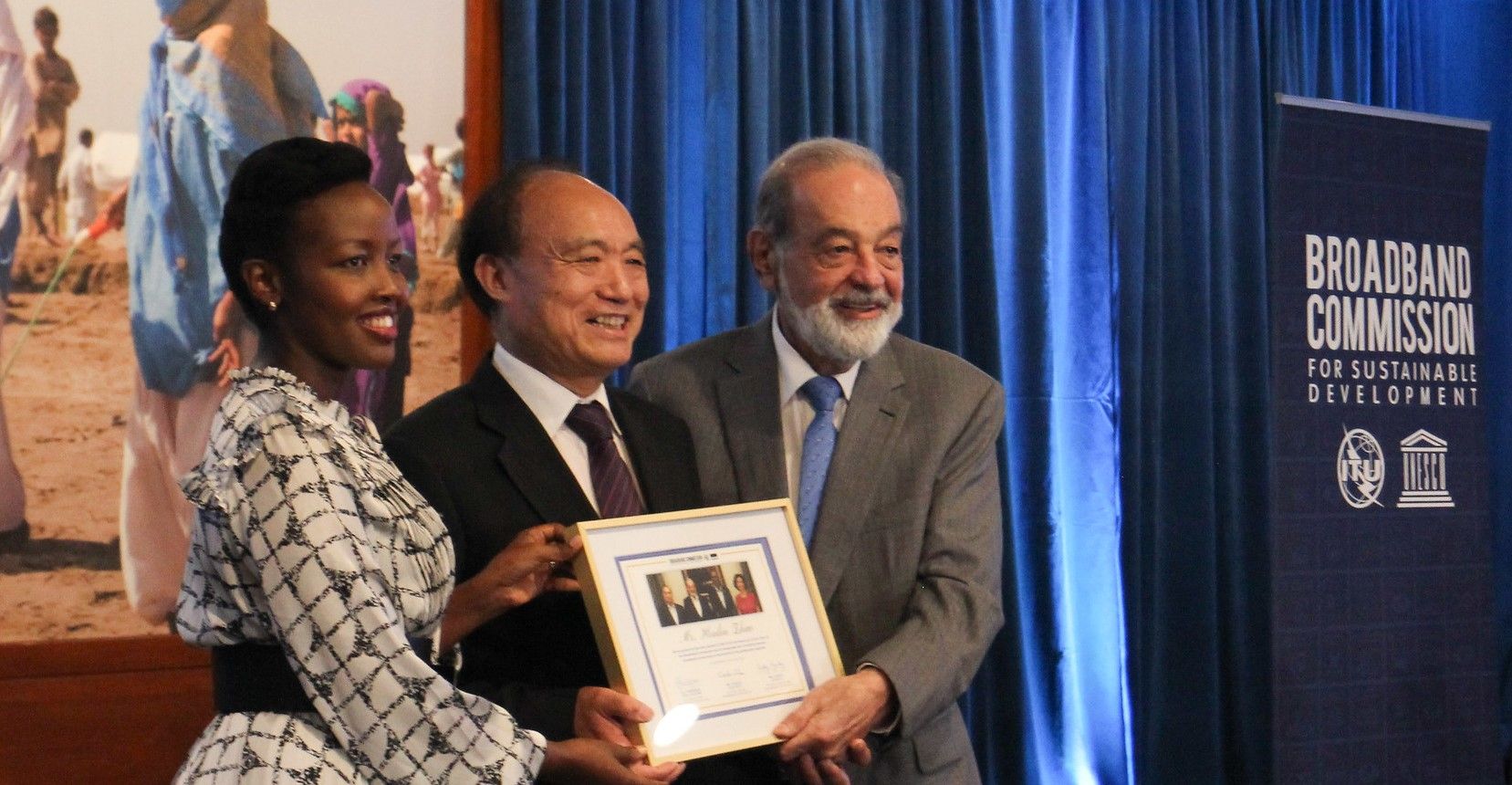
The power of ICT for education
By Houlin Zhao, ITU Secretary-General
The Transforming Education Summit has been an opportunity for countries to make commitments to provide high-quality digital learning for all.
Today’s session organized by ITU, UNESCO and UNICEF was no exception.
The urgency to transform education is compounded by a figure just announced by the International Telecommunication Union (ITU): 2.7 billion people worldwide are still unconnected.
Many of them are students and teachers who lack access to the Internet at home or at school.
United Nations Secretary-General António Guterres has repeatedly called on the international community to connect everyone with affordable services by 2030 — including schools, teachers, and students everywhere.
Three Cs
Answering this call requires a comprehensive, three-pronged approach based on content, capacity, and connectivity.
More than ever, information and communication technology (ICT) supports all three Cs in creating a better education system for everyone, everywhere.
The 2022 State of Broadband Report, released just yesterday during the Annual Fall Meeting of the Broadband Commission, underscores how poor and remote areas urgently need to attract vast investments to support a more digital world.
This has been my life’s work and I am pleased to see this report sending such a strong and clear message.
Receiving a certificate of appreciation from Mr. Slim and Minister Ingabire, who attended on behalf of President Paul Kagame, makes this moment all the more meaningful. It has been an honour to work with the leadership of the Broadband Commission all those years as Co-Vice Chair. I am grateful to all the Commissioners for their vision and unwavering commitment.
Connecting every school
My long-standing vision based on 4 Is: Infrastructure, Investment, Innovation, and Inclusiveness, complements the 3Cs.
Among them, connectivity is the most urgent challenge.
Giga, the ITU-UNICEF global initiative to connect every school to the Internet, is an example of how we can expand the third C – connectivity – and, with it, opportunity for learners and educators everywhere.
So far, Giga has mapped over 1,100,000 schools in 50 countries. Work is underway in 19 countries with over 5,300 schools in Sub-Saharan Africa, Central Asia, and Latin America and the Caribbean already connected. 2 million more students and teachers now have Internet access.
I thank all Giga partners, including Switzerland and Spain, who announced significant commitments to support this initiative.
Additionally, at the World Telecommunication Development Conference in June 2022, ITU Member States passed a resolution on “Connecting Every School to the Internet and Every Young Person to Information and Communication Technology Services.”
Broadband’s vital role
Broadband connectivity is essential for the successful education of students of all ages everywhere. Transforming education therefore requires innovative strategies and policies to enable broadband adoption and to accelerate digital inclusion.
I am pleased that small and medium-sized enterprises (SMEs) are featured prominently in the 2022 State of Broadband Report. Ensuring greater participation of SMEs in ITU’s work has been one of my priorities as Secretary-General. Having reduced membership fees these companies, ITU is seeing more of them participate in our activities.
But our work cannot stop here. One third of the world’s population is still offline.
We must achieve high-quality digital learning for all.
ITU’s contribution
As the UN specialized agency for ICT, our organization is well placed to take the lead in bringing high-quality education to all.
Established in 1865 and headquartered in Geneva, ITU has 193 Members States, over 900 private sector members, including most of the world’s best-known ICT companies, and more than 160 universities and research institutes.
Education has been on ITU’s agenda for decades, from promoting remote learning via broadcasting, TV and satellite to connecting every school to the Internet.
Recent years have also seen ITU join other UN organizations to advance quality education worldwide, including UNESCO for e-learning, the ILO on digital literacy for young Africans, and UNICEF to bring connectivity to schools.
ITU also supports life-long learning by encouraging its members to support older generations with new digital skills. We also provide teachers with digital skills training and engage with SMEs to develop educational apps and digital content.
On the agendas of the World Telecommunication Standardization Assembly (WTSA) and World Telecommunication Development Conference (WTDC) earlier this year, we included the goals of the Transforming Education Summit.
Several resolutions were adopted in support of these goals, including connecting schools and offering ICT access to youth.
More recently, ITU actively participated in the Transforming Education Summit Advisory Group. At its last meeting, I made a proposal to develop standards that would facilitate interchangeable curricula and educational data exchange systems.
ITU stands ready to partner in the creation of tomorrow’s education system.
To be continued at PP-22
On 26 September, a few days from now, the ITU Plenipotentiary Conference will open in Bucharest, Romania. It will be an opportunity for countries to shape digital transformation for years to come.
I am confident delegates will take the outcomes of the Transforming Education Summit into consideration during their deliberations.
It is my hope that we can use this moment to advance high-quality digital learning for all.
Let us put connectivity at the center of the conversation about the future of teaching and learning.
Based on Mr. Zhao’s remarks at the Broadband Commission Annual Fall Meeting on 18 September and during the Spotlight Session “Digital Learning and Transformation” organized by ITU, UNESCO, and UNICEF on Leaders Day of the Transforming Education Summit, 19 September.
Image credit: ITU/J. Gorlovetskaya
